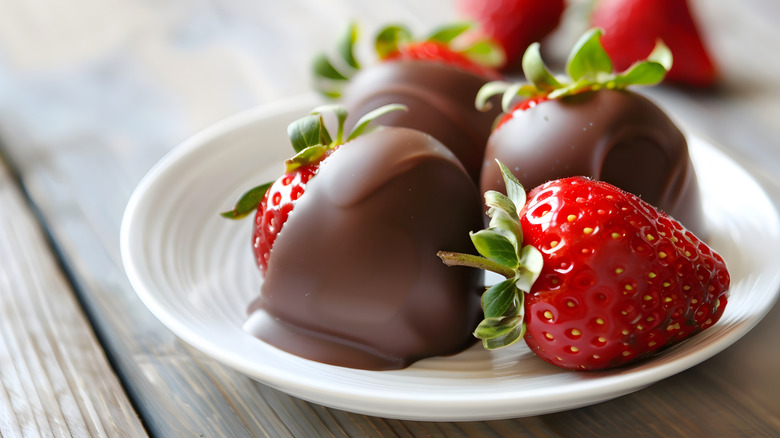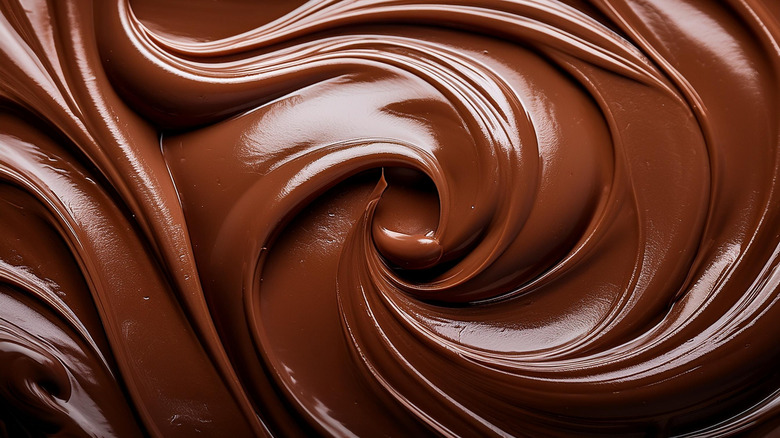For The Best Chocolate-Covered Strawberries, Use This Type Of Chocolate
Chocolate strawberries are a classic for a reason. I prefer dark chocolate on mine, but master chocolatier Phillip Ashley Rix disagrees. "Milk chocolate is perfect for berries," he says. It's not too sweet like white chocolate (which, in my opinion, isn't real chocolate), nor is it as robust in flavor as dark chocolate. As for what kind of milk chocolate, Rix goes for couverture instead of chocolate chips or candy melts.
Couverture, or covering chocolate, has a higher percentage of cocoa butter than other ingredients and the aforementioned types of chocolates, giving it superior meltability and texture. It's also what professional chocolatiers use. According to Rix, "It's more flavorful and doesn't leave that weird coating on your palate." ("That weird coating" comes from the seed oils found in candy melts.) More cocoa butter results in more fat and, therefore, flavor, and its crystalline form plays an important role in creating high-quality chocolate. Using couverture ensures the chocolate on your chocolate-covered strawberries doesn't "bloom"– in other words, it doesn't become dull in tone, get a white or gray film on top, or end up tasting grainy or greasy.
The two-time James Beard Award nominee's cookbook, "For the Love of Chocolate: 80 At-Home Recipes from a Master Chocolatier's Imagination," is coming out on September 9, and contains easy methods for handling couverture.
How to make chocolate covered-strawberries like a master chocolatier
Before you even think about touching the chocolate, your strawberries have to be ready. Rix explains that the best way to prep your strawberries is to make sure they are completely dried after washing them. If the strawberries aren't fully dry, the chocolate won't coat them as well and the finished product can get sweaty.
When it comes to the couverture, you need to put in the extra work and temper your chocolate. Tempering chocolate is when you adjust the temperature of the chocolate by melting it, bringing the temperature back down, then raising it slightly to stabilize the cocoa butter's crystal structures. Once chocolate is tempered, it becomes snappy, shiny, smooth, and more stable against temperature changes, so the only melting it does is in your mouth. (The snap that tempering yields is the unexpected trick to tell if a chocolate is high quality.)
Using a glass bowl, melt your couverture chocolate using the double boiler method or the microwave. Then, remove from the heat and add unmelted chocolate to adjust the temperature, a technique Rix refers to as seeding. It's important to use a good glass bowl for this because, according to Rix, "chocolate can scorch pretty easily in plastic and metal bowls prevent you being able to reheat quickly if you need to raise the temperature of the chocolate, periodically, to continue working." He notes that, "you'll know your chocolate has been tempered properly because it sets quickly and smoothly." Follow this master chocolatier's instructions to make the best, most unforgettable chocolate-covered strawberries in your kitchen.

